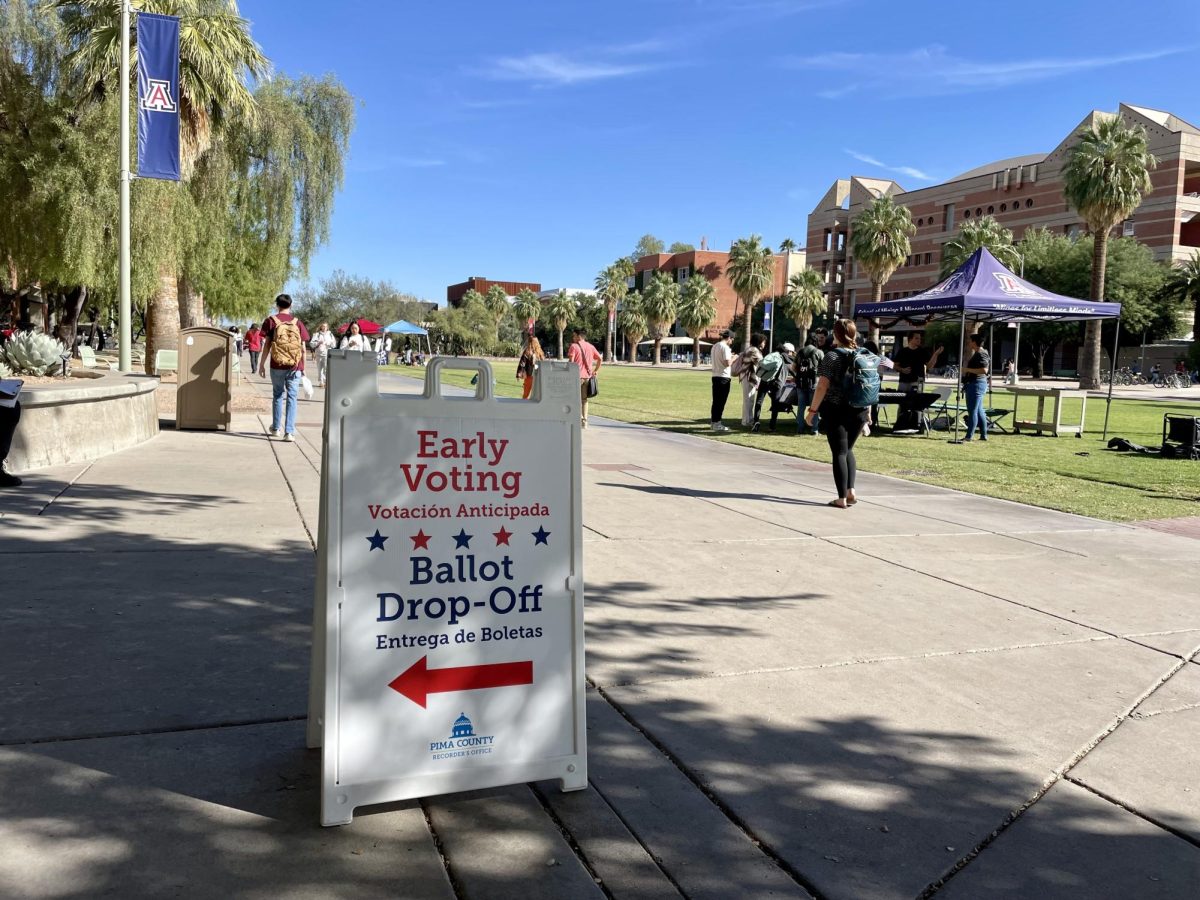Included below is a transcript of the conversation.
Daily Wildcat: So, our first question just specifically about the university is about preparations for the worst-case scenario, which would be that there is not going to be in-person sessions in the fall. What are the plans for that?
President Robbins: You know, I’ve been very optimistic that we would be back to classes face-to-face in the fall because I do think that we’re going to invariably hit a peak at some point, probably mid-April, end of April. Here’s the problem, though: Even after we hit the peak — I think you’ve all been following — the number of deaths are still going to continue and there will be a resurgence of this virus in the typical influenza season in the fall and in the winter.
Now, of course, we’re not as usually as hard-hit because it’s warmer here. But, as I’ve said many times, I didn’t realize how cold it gets in Tucson. I know it’s all relative compared to Michigan or whatever. But it will probably abate down. I’ve been trying to learn as much as I can about how long a period of time does the virus need to be exposed to UV light to kill it? And I’m sure those experiments are going on, but it’s probably more that people get outside and into warmer weather and are not as close in. But as we’ve seen, going to beaches and congregating on beaches, there have been definitely cases there.
My concern about bringing everybody out of their isolation is that until we have a vaccine, we’re not going to be protected. And so that makes me somewhat less optimistic that we’re all going to just magically get back together in the fall, as much as I would love to see that happen. And it may happen. One of the potential ways that it could happen, this one is not as well thought out, certainly from the legal side, but we’re working very hard on developing our own test kits, which we’ve been able to do. We can’t scale it to meet everyone’s needs, but I think we have enough to meet certainly Campus Health’s needs.
That was my biggest concern. I didn’t know how many students were going to return to campus. It could’ve been we had thousands and thousands of students that returned and needed testing. You know, we are a long way from the epicenter of any distribution coming out of a national stockpile.
So, early on, I ask[ed] Dr. [Michael] Abecassis, who is a renowned transplant surgeon, and both of us have been perturbing the human immune system for over 35 years, as we’ve done transplants on hundreds and thousands of patients. So we got together and quickly tried to marshal all of the virologists and basic scientists across campus to get on producing the kits. And so, it turns out we hit some barriers, meaning that, for instance, some of the platforms that run the analysis of the test, which it’s an RT-PCR — reverse transcription polymerase chain reaction test — and that’s the nasopharyngeal swabs. Turns out that there are some properties of cotton that may have an effect on killing the virus, so most of the platforms initially told us that we couldn’t have wooden sticks and we couldn’t have cotton absorbents. So, we were lucky enough to be resourceful to find some synthetic shafts and polymers that would absorb the liquid in the nasopharyngeal swabs. Long story short is, we’re up and making tests, but the thing that I knew the next wave — that’s just to decide, “Are you infected today?” It doesn’t mean you can’t be infected tomorrow, and so you’d have to get one of those tests every day.
I’ve not had the test, but I don’t think it’s a very enjoyable experience, having one of those swabs run down the back of your throat. But the real issue is going to be a serological test. So, that’s a blood test, and we are actively working to be able to produce enough tests that would help us to test all students all faculty, all staff, to determine active infection. But more importantly, I think potential immunity: Are you making antibodies to the antigen?
I think until we have a vaccine, it’s probably going to be at least for front-line health care workers and students that are going into clinical environments where we know there’s COVID-19. Right now, you can’t be on the front line doing any kind of health care unless you, for instance, get a TB test. And so, I’m assuming that we’re going to that, so we’re trying to control our own destiny a bit by developing those kits in-house.
DW: And then, what is your plan if we aren’t back in the fall?
President Robbins: I think we’re going to have to learn from what we did in the spring term. We would essentially be a digital platform offering classes to individuals digitally. Just what it’s doing right now.
DW: Do you think that will impact tuition at all or any sort of sense?
President Robbins: That’s a good point, you know, the irony of it is that, you probably know the tuition, but my sense is that online tuition is actually more expensive than in-person tuition for in-state students.
So, I think that, you know, you’re probably familiar with these lawsuits that are going on. They haven’t really … I think it’s more about rebates for room-board fees and things like that. You know, if you made the argument you needed to get tuition rebate, actually, if you’re paying for in-person and people say, “Well, I didn’t sign up for this online thing.”
To be clear: What we’re offering is really not the same as the online offering. It’s more interactive with the professors and on and on. But it actually costs more. The [cost] of online tuition is more than it is for actual in-person classes.
So, I do think we’re going to have to take into consideration tuition. I’m not for a minute suggesting we would increase tuition to online rates. I think this is a very unusual situation, and we’ve got to be very cognizant of that. We’ve got more unemployment in the country that we’ve ever had in the history of our country. People are hurting, and, you know, we’ve got to certainly take that into account.
The Daily Wildcat will be releasing more videos subsequently from the April 3 interview.
Follow the Daily Wildcat on Twitter









